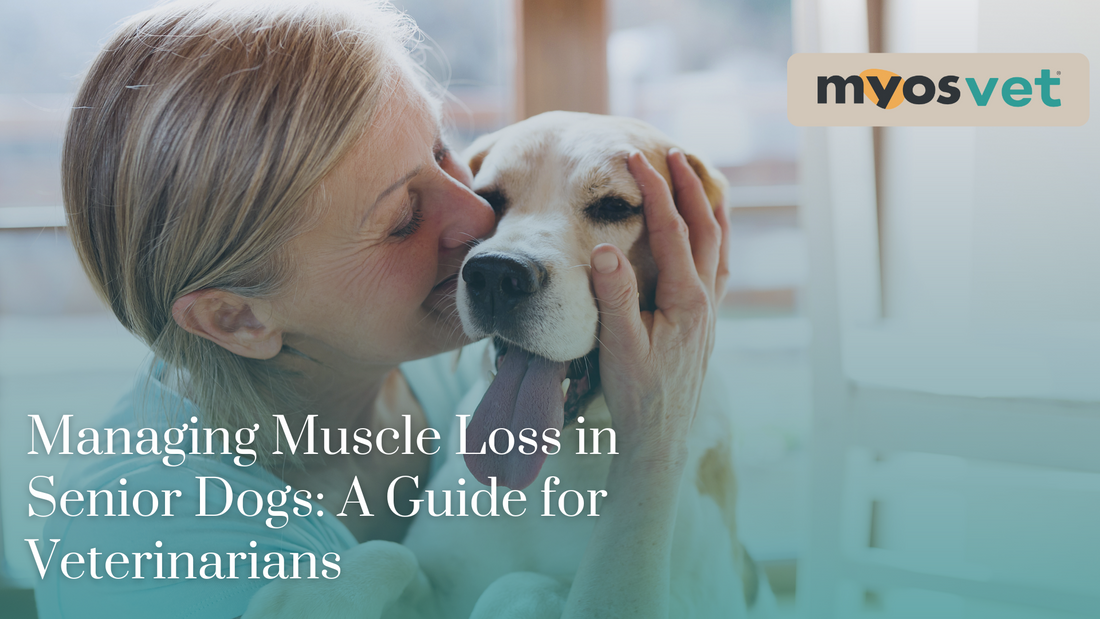
Managing Muscle Loss in Senior Dogs: A Guide for Veterinarians
Share
As our canine companions age, veterinarians face the unique challenge of managing their evolving health needs. One critical aspect that often goes overlooked is muscle loss, or sarcopenia, which can significantly impact a dog's mobility, overall quality of life, and longevity. Understanding the causes and offering effective interventions can help veterinarians support their senior patients more comprehensively.
Understanding Sarcopenia in Senior Dogs
Sarcopenia, the age-related loss of muscle mass and strength, is a common condition in aging dogs, just as it is in humans. It typically begins as early as 7 years of age in larger breeds, and slightly later in smaller breeds. Muscle loss can lead to reduced mobility, increased risk of injury, joint problems, and even metabolic disorders, all of which compound the challenges of aging.
Veterinarians play a vital role in recognizing early signs of muscle deterioration. Common symptoms include:
- Decreased activity levels or reluctance to exercise
- Difficulty standing, climbing stairs, or jumping
- Noticeable muscle atrophy, especially in the hind limbs
- Increased fatigue or lethargy
Why Muscle Loss Matters
Muscle health is essential not only for mobility but for metabolic function, immune support, and joint stabilization. As muscle mass decreases, dogs may become more prone to falls, fractures, or ligament injuries. In addition, the loss of muscle mass often correlates with weight gain due to reduced calorie expenditure, which further strains the joints and exacerbates conditions like osteoarthritis.
Preserving muscle mass in senior dogs can significantly enhance their quality of life, allowing them to remain active, maintain balance, and manage their weight more effectively.
Strategies for Slowing Muscle Loss
While aging is inevitable, there are strategies veterinarians can recommend slowing the progression of muscle loss and even rebuild muscle tissue in senior dogs. These include a combination of nutrition, exercise, and supplementation.
- Regular, Low-Impact Exercise
- Encourage pet owners to maintain regular physical activity with their senior dogs. Low-impact exercises like swimming, short walks, or controlled treadmill exercises help maintain muscle mass without overloading aging joints.
- Tailoring exercise routines to the dog’s individual health status and physical abilities is crucial to avoid injury.
- Nutritional Support
- Proper nutrition is foundational to muscle health. Senior dogs often require diets rich in high-quality proteins to support muscle maintenance. Veterinarians should recommend foods that are easy to digest and high in amino acids, which are essential for muscle repair and growth.
- Additionally, ensuring that the diet is balanced to avoid weight gain is critical, as obesity can accelerate muscle atrophy by reducing physical activity.
- Supplementation: The Role of Fortetropin in Muscle Health
- One of the most effective ways to combat muscle loss in senior dogs is through targeted supplementation. Fortetropin, the key ingredient in MYOS Canine Muscle Formula, is designed to increase muscle mass, reduce atrophy, and enhance recovery in dogs.
- Fortetropin is derived from fertilized egg yolk and works by promoting muscle protein synthesis and inhibiting muscle degradation. Veterinarians can confidently recommend MYOS Canine Muscle Formula as a natural and safe option for maintaining muscle mass in senior dogs.
Key Recommendations for Veterinarians:
- Early Detection: Monitor muscle mass and mobility in senior dogs during routine check-ups.
- Tailored Exercise Plans: Recommend low-impact, safe exercises that preserve muscle without straining joints.
- Nutrition and Supplementation: Support owners in choosing diets and supplements that optimize muscle health, like MYOS Canine Muscle Formula with Fortetropin.
By being proactive and incorporating these strategies, veterinarians can play a significant role in improving the quality of life for senior dogs, ensuring they age with grace, strength, and vitality.
Conclusion
Sarcopenia doesn’t have to define the senior years of a dog’s life. Through a combination of the right exercise, diet, and the powerful muscle-building support of Fortetropin, veterinarians can help their aging patients stay active and enjoy more years of mobility and health. As advocates for canine wellness, our mission extends beyond treating illness—it's about promoting lifelong vitality, and muscle health is a crucial part of that journey.
